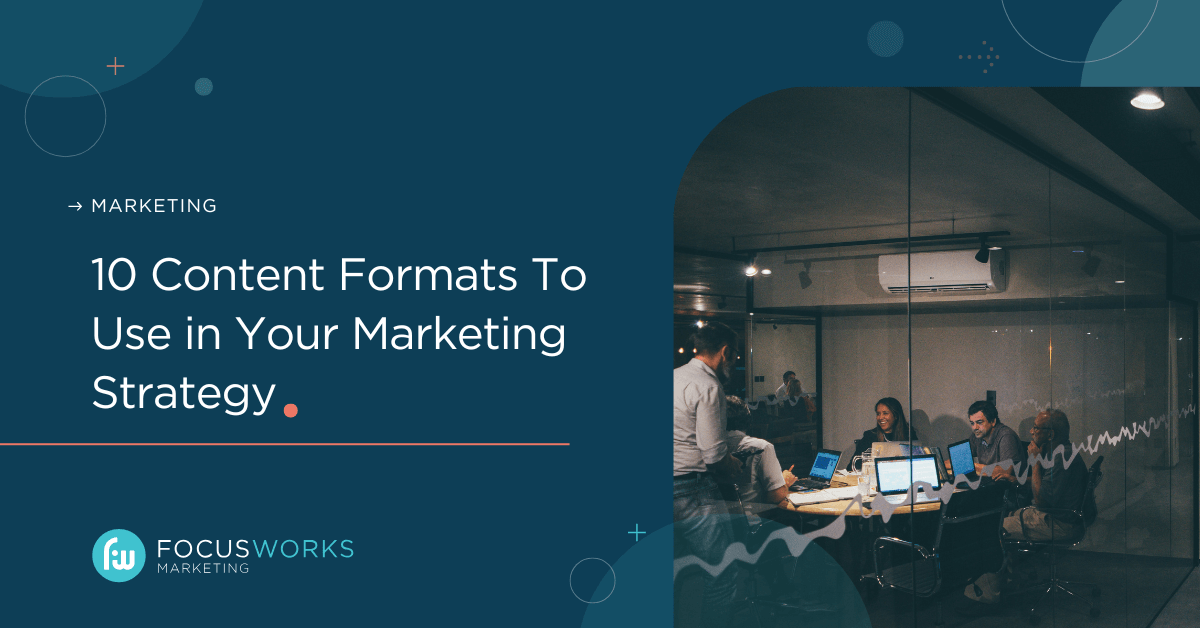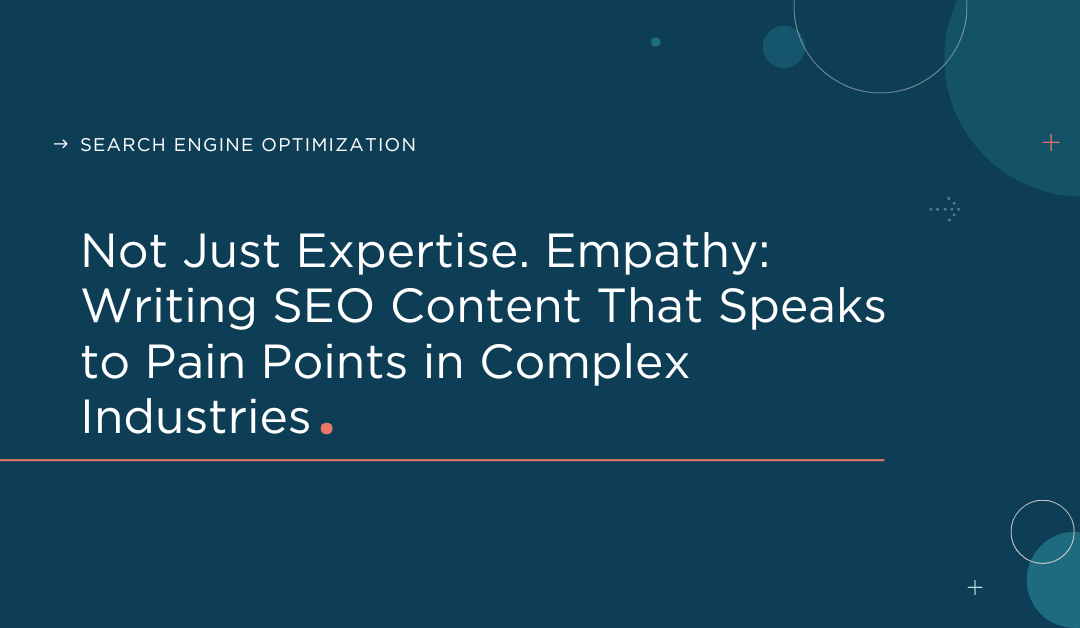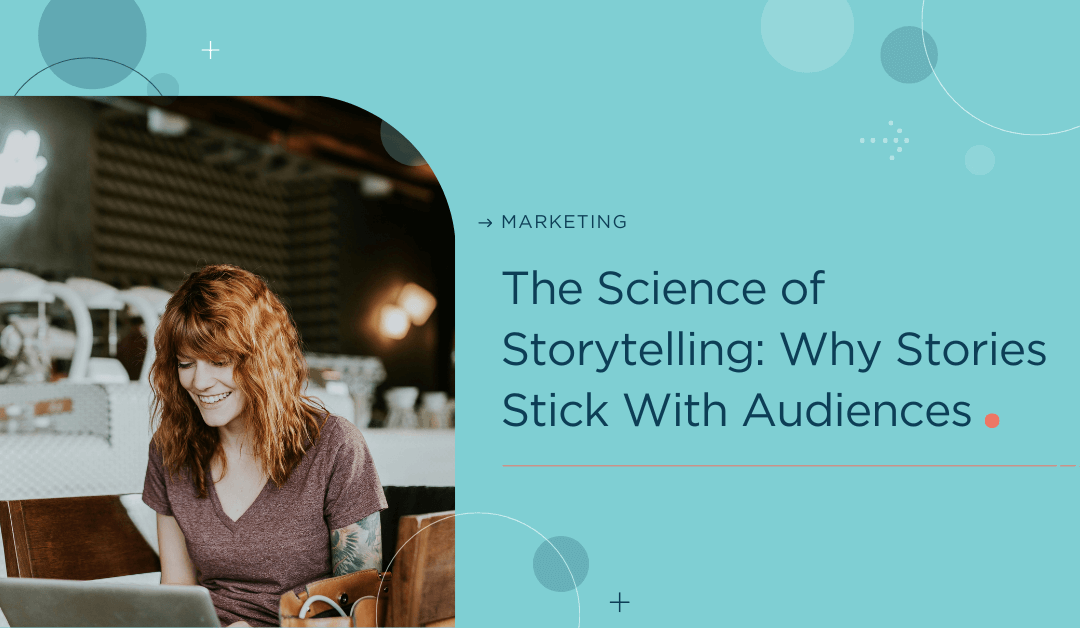We’ve all had that moment with a trend.
You see someone nail it—an untucked button-down at a partner meeting, or bold glasses where everyone else went neutral. It breaks the pattern, but it works. And it makes you wonder if you could pull it off too.
So you try it.
And immediately wonder who gave you permission to leave the house like this.
Turns out, even great pieces don’t work if they’re not built for you.
Content strategy is exactly the same.
You’ve seen other firms go all-in on trends—launching a daily podcast, posting slick animated explainers on LinkedIn, or pushing out 4,000-word “ultimate guides” to estate planning. From the outside, it looks strategic. But when you try the same thing, the results fall flat. No traction. No leads. Just a lot of time and budget you’re not getting back.
The issue isn’t that the format itself is flawed. It simply wasn’t built to suit your business, your audience, or the decision-making stage they’re in.
What the data says about content formats that work in 2025
Every brand needs a strategy that fits—but that doesn’t mean you build it in a vacuum.
Even the most tailored content plan benefits from understanding the broader landscape: what’s gaining traction, what’s falling flat, and where audience behaviors are shifting.
Because here’s the reality: not every format is performing equally in 2025.
According to the Content Marketing Institute’s 2024 B2B Benchmark Report, the top-performing content types include:
- Case studies: 48% of marketers cited them as their most effective format for driving results
- In-depth articles (1500+ words): Ranked highly for both engagement and SEO impact
- Original research: Frequently used for generating backlinks and reinforcing brand credibility
- Email newsletters: Gaining traction due to greater resistance to social and ad noise
Meanwhile, formats that once dominated—like standard webinars or low-substance video—are seeing weaker performance, particularly in B2B and professional services. Buyers are looking for clear thinking, practical value, and content that respects their time.
You don’t need to follow every trend.
But understanding the current landscape helps you make better decisions about what to create, and when.
That’s why we’ve organized these 10 formats into three categories—based on what they’re best at doing—and identified where each one fits into your buyer’s journey.
Engagement drivers: Content that earns attention and sparks curiosity
These formats are built to draw people in. They’re what get your firm noticed in the early stages—when your audience doesn’t yet know what they need, but they’re asking questions and looking for clarity.
Use blog posts to attract early-stage attention
Blog posts are a staple for good reason. They’re beneficial for SEO, easy to update, and flexible enough to speak to different buyer stages. At the top of the funnel, they help answer real questions—like “Should I set up an LLC or an S-Corp?”—while positioning your firm as a helpful, credible source.
For firms focused on accounting, law, or advisory services, the most effective blog content often starts where client questions begin: unclear definitions, tricky comparisons, and costly mistakes.
Use quizzes and polls to engage and segment your audience
Quizzes and polls give prospects a low-friction way to interact with your content—and they give you a clear signal of what they care about. A quiz titled “What kind of accounting support does your business actually need?” can help readers self-sort, while helping your team tailor follow-up.
They also serve a dual purpose: attention-getting at the surface, and insight-generating underneath.
Use podcasts to build familiarity and trust over time
Podcasts are slow-burn relationship builders. They let people hear how you think, get used to your voice, and keep you top of mind over time. This works especially well for relationship-driven services like legal, consulting, or financial advisory.
A great example of this is a podcast like Erika Taught Me, where an attorney breaks down business, finance, and entrepreneurial questions for consumers and business owners while weaving in personal anecdotes and real-life scenarios.
Use infographics to make complex ideas digestible
Infographics are visual hooks—they help turn multi-step processes or data-dense content into something skimmable and clear. They’re especially useful when you need to explain things like timelines, structural choices, or the difference between options.
For example, an infographic comparing S-corp vs. C-corp structure can clarify what a 1,500-word article might bury in paragraphs—you’ll keep people’s attention while giving them the information they need.
Trust growers: Content that builds credibility and reduces friction
These formats speak to prospects who are already interested—but still deciding. They’ve seen your name, maybe read a blog post or two, and now they’re looking for confirmation. Trust content answers the unspoken questions:
Can you actually deliver? Do you understand my world? Are you worth the investment?
Use case studies to demonstrate your value in context
Case studies take your offering from abstract to concrete. They let you show how you think, how you work, and what you’ve helped clients accomplish. The strongest ones focus on outcomes and relevance.
For example, an accounting firm working with early-stage SaaS startups might highlight how it helped a client clean up financials before fundraising. Or a law firm might spotlight a tricky M&A deal involving multiple jurisdictions and regulatory reviews.
The key: make it recognizable. Your reader should see a version of themselves in the story.
Use checklists to signal readiness and attention to detail
Checklists may seem basic, but they communicate clarity and control. They’re the formats that say, “We’ve done this before—and we know where things fall through the cracks.”
Whether it’s a “Pre-close diligence checklist” for business buyers or a “Quarter-end accounting cleanup list” for finance teams, these assets serve double duty: they help your audience get something done and reinforce your firm’s familiarity with real-world workflows.
Use email newsletters to stay relevant and top of mind
Newsletters are the quiet workhorses of trust-building. When done well, they create a sense of rhythm and presence—without demanding too much from the reader. And over time, they build consistency and recognition.
For example, a newsletter for business owners might include a mix of brief regulatory updates, client FAQs, and “what we’re seeing in the market” insights. It’s not just about pushing content—it’s about curating what matters and making it easy to follow along.
Authority builders: Content that educates deeply and earns respect
This content shows you’ve put in the reps. It’s not about quick hits—it’s about shifting how your audience thinks. These formats show you’ve done the work and have something specific to share.
Use original research to lead the conversation
Original research positions your brand as a source. It gives you something no one else has—insights your audience can’t find elsewhere. That could mean analyzing client data trends, running an industry survey, or packaging internal benchmarks.
For example, a firm serving private equity funds might release an annual “Fund Ops Benchmark Report,” with anonymized data on team structures, tech stacks, and capital calls. Or an accounting firm might compile insights from dozens of year-end close cycles to highlight overlooked operational gaps.
This kind of content tends to get cited, linked to, and passed around—building reputation far beyond your immediate network.
Use long-form articles to create searchable, practical reference points
Long-form content gives you space to unpack complexity. It’s where your knowledge meets real client questions. When they work, these pieces attract organic traffic and get bookmarked, referenced, and passed along.
For instance, a 2,000-word guide titled “How to structure a founder buyout” doesn’t just bring in clicks—it shows you’ve seen this scenario from all sides. The best long-form pieces become the kind of resource clients come back to.
Use white papers, reports, and ebooks to build understanding over time
These assets are for prospects who want to dig in. They work well as gated content or follow-up material for high-intent leads. And they’re a way to show your thinking has depth, not just polish.
For example, a white paper titled “When to insource vs. outsource finance in a growing startup” can serve as both lead gen and sales enablement—something that lives beyond a single touchpoint. Reports and ebooks can also become part of a larger point of view or recurring research package.
Final thoughts: It’s about fit, not flash
This framework isn’t a checklist to follow. It’s a way to think more clearly about how your content performs—so you can stop throwing things at the wall and start building something that moves people forward.
Start with fit. Stay focused on function. And build a strategy that actually works for your business. If you’re ready to get started, drop us a line!



